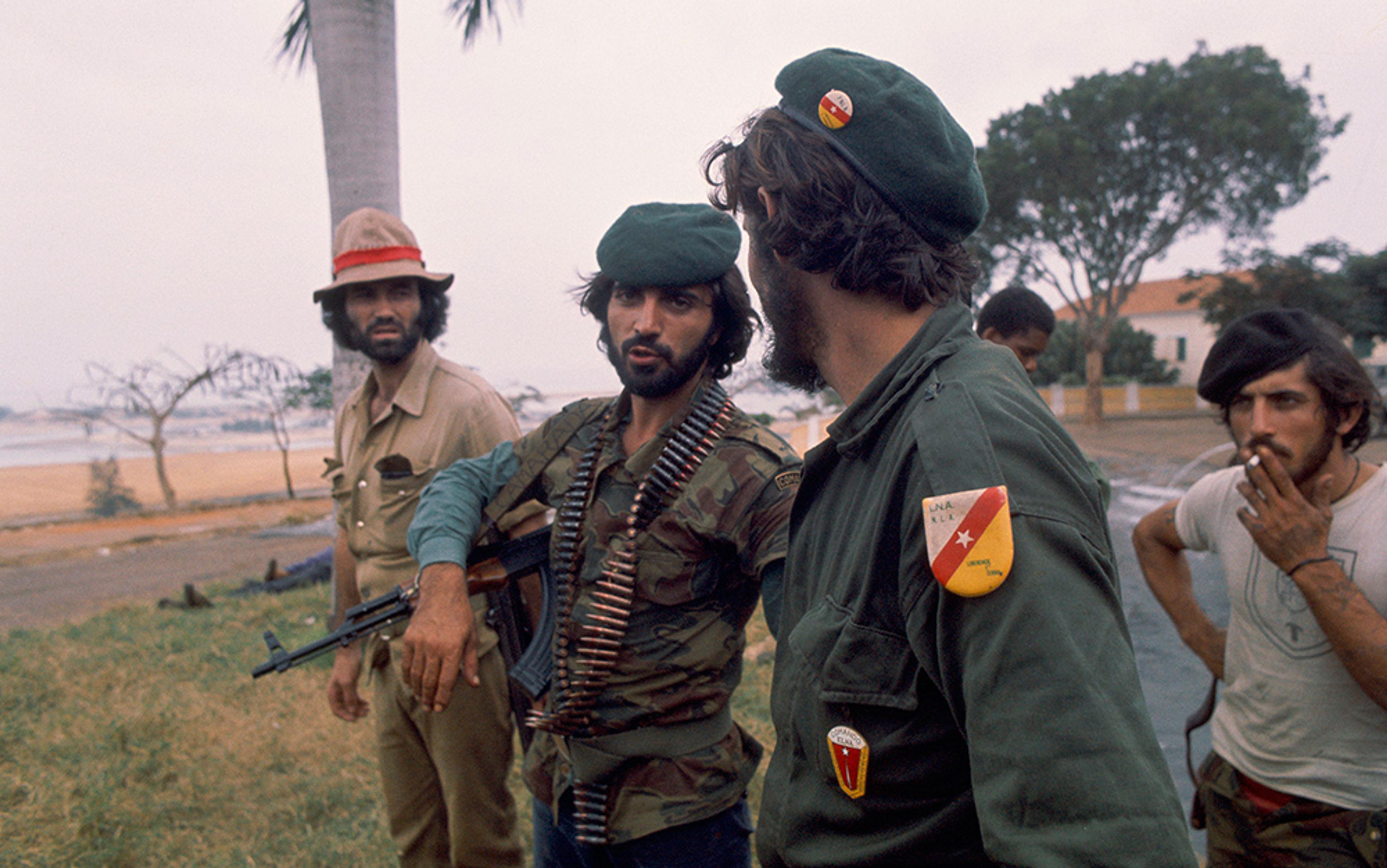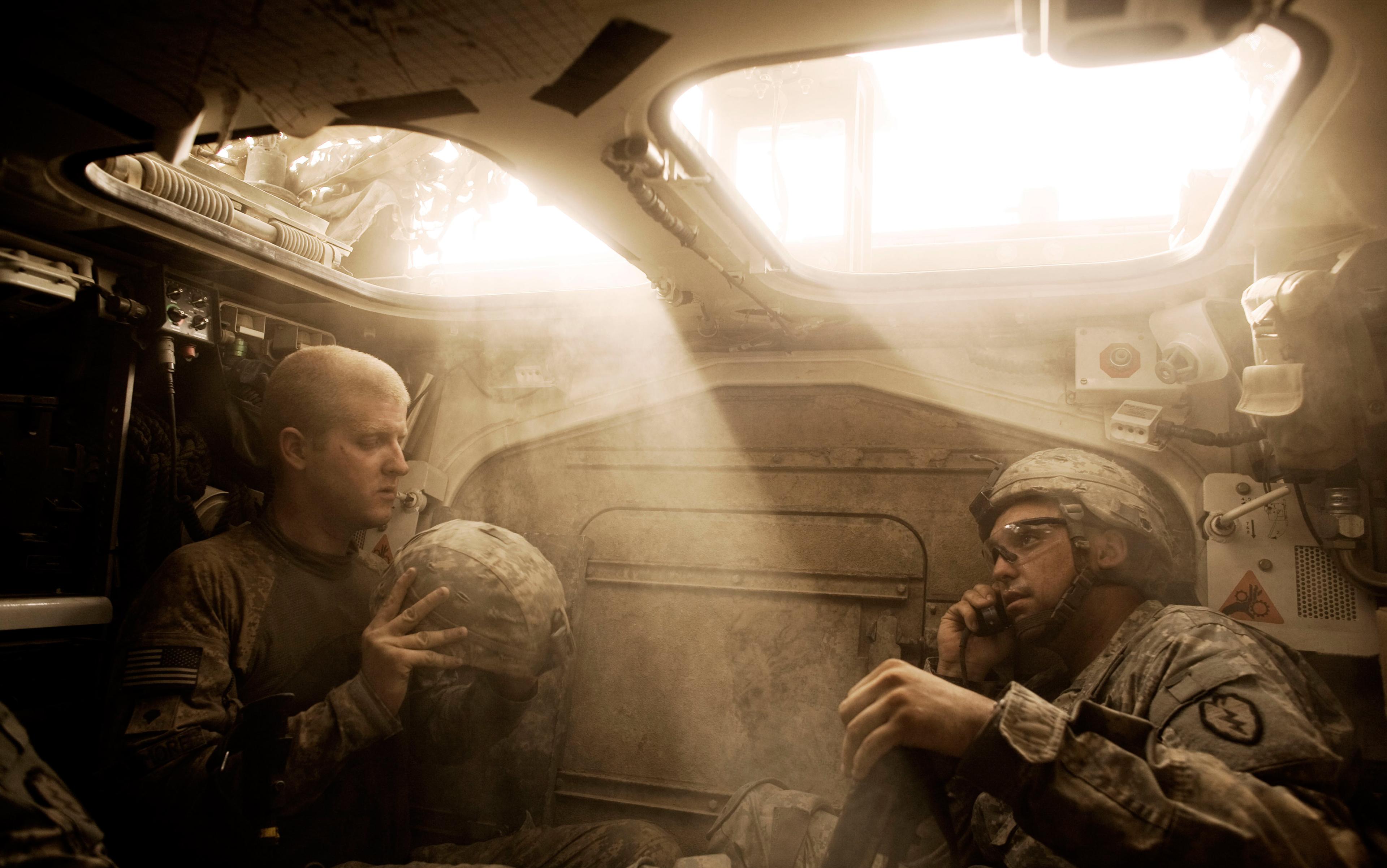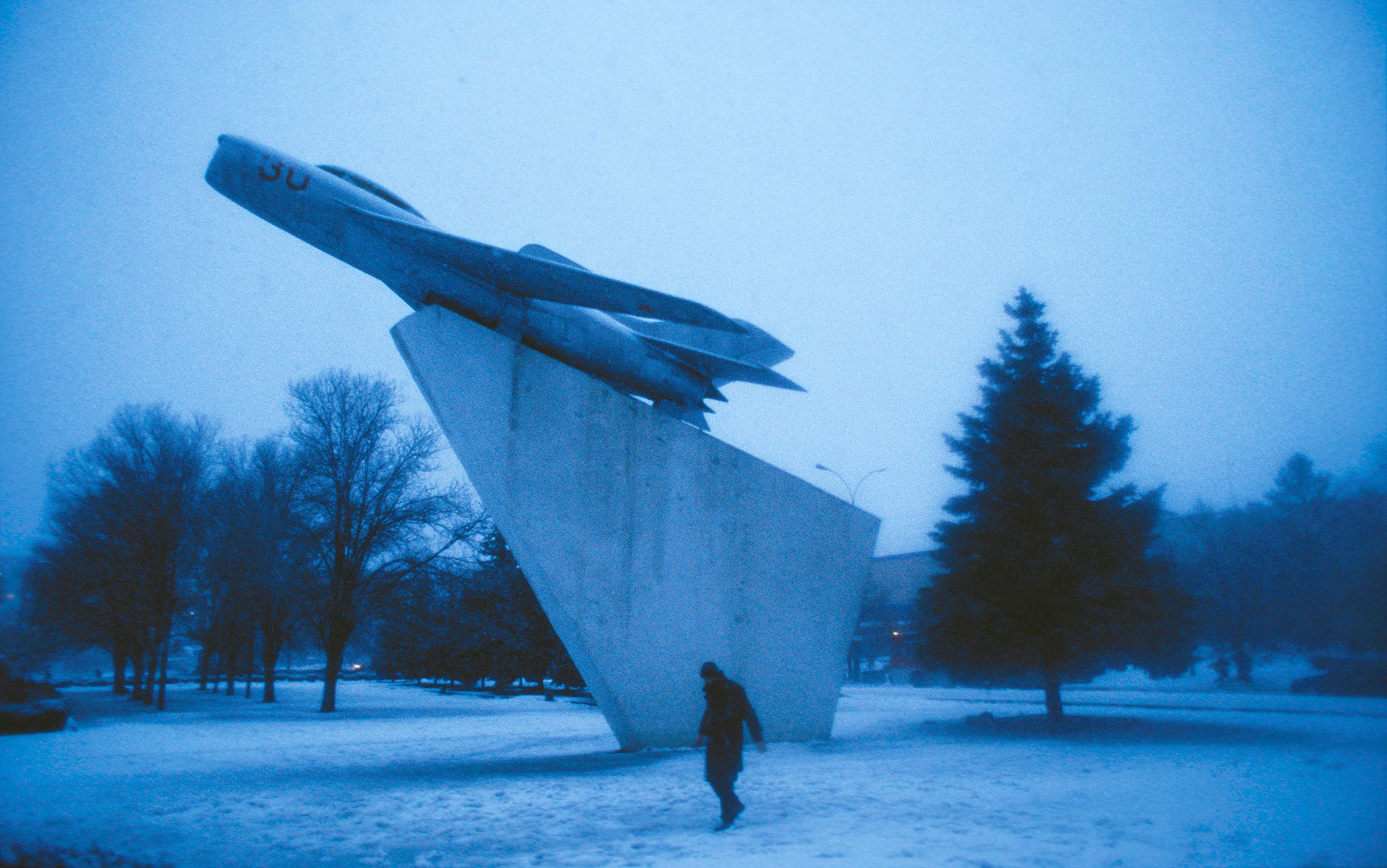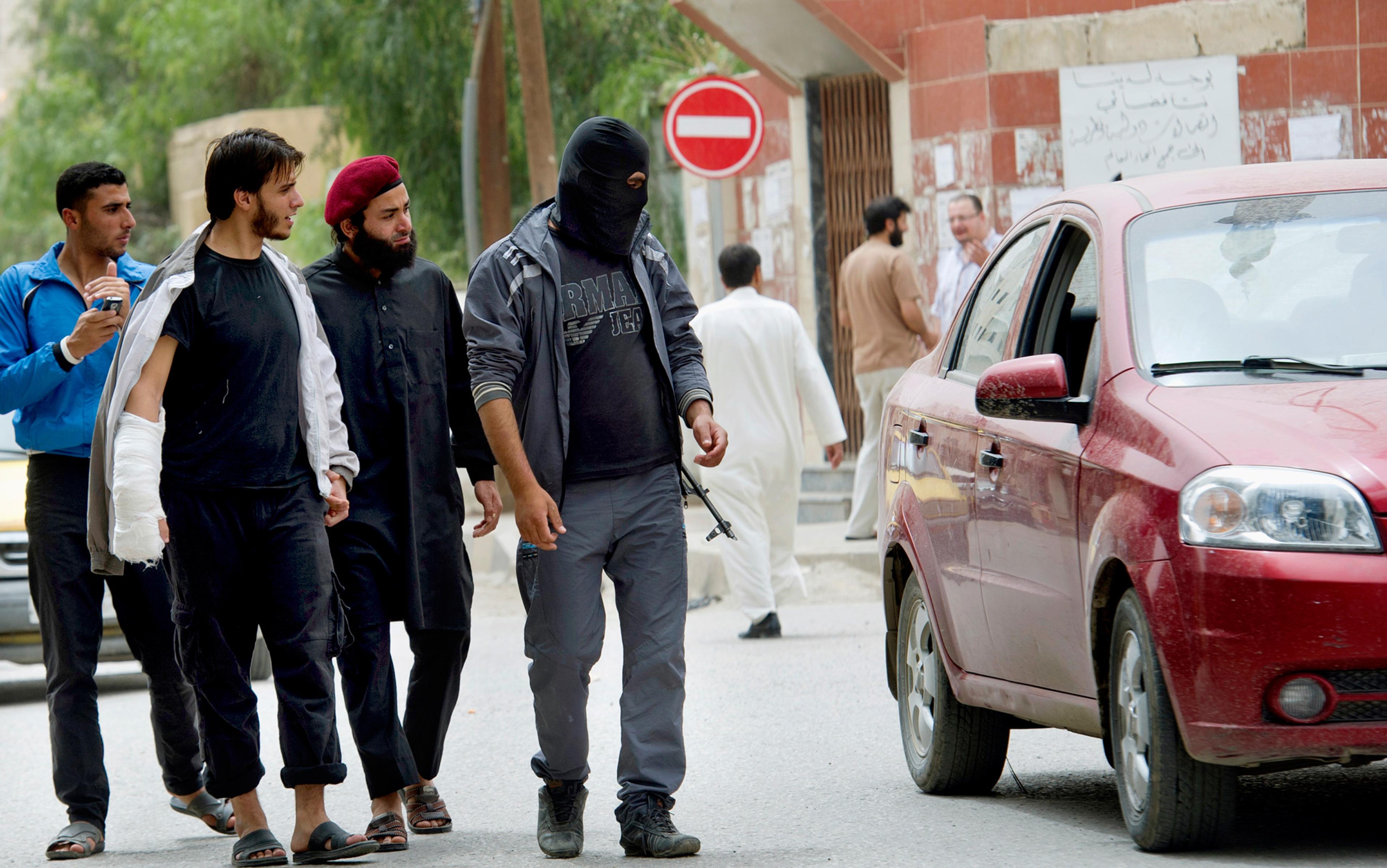The image of the battlefield is one that exerts a powerful hold on our collective imagination. It immediately evokes in our minds the sight of massed troops clashing furiously with each other, culminating in a decisive outcome that determines the fate of a wider conflict. However, such military confrontations have largely vanished from the contemporary landscape of war. Infantry troops typically engage each other today at ranges of several hundred metres. Sporadic skirmishes far outweigh large-scale engagements. The projection of uncontested air power is much the favoured use of force for risk-averse Western militaries. Conflicts simmer on or peter out without any grand clash of arms deciding their outcome.
But the decline of the traditional conception of the battlefield is hardly a novel phenomenon. Although the Napoleonic Wars were still marked by pivotal one-day battles fought with tight formations of troops in close combat, by the late 19th century the classical battlefield was already in crisis.
The primary cause of this crisis lies with the appearance of more accurate and far-ranging weaponry in the second half of the 19th century. A great movement of battlefield dispersion was thereupon set into motion. Firearms acquired a new lethality after the introduction of such technological innovations as barrel rifling, conical bullets and smokeless propellants. Earlier muskets could not exceed aimed ranges of 75 metres. Yet by the First World War, trained marksmen could hit targets 300 metres away. The further development of the machine gun also dramatically increased the rate of fire that could be brought to bear on a position by a single firearm. Artillery underwent a similar evolution in this period. During the American Civil War, targets had to be visible from the gun’s position. Fifty years later, accurate ranges of 20 kilometres were attainable.
The new deadliness of fire had two major consequences for the tactical deployment of troops. First of all, the increased vulnerability of forces to remote targeting meant that, in the absence of protective cover, any conspicuous concentration of troops risked drawing devastating fire to itself. In addition to this, the growing lethality of weaponry implied that small units could wield the kind of effects that had previously required the massing of forces equipped with earlier firearms. In combination, these two trends induced a dramatic emptying of the battlefield at the turn of the 20th century. Troops now scattered across the combat area, keeping as low a profile as possible. Bright showy uniforms had been the pride of regiments for several centuries. They now rapidly gave way to military apparel dominated by earthy tones designed to blend into the surrounding terrain. As one Russian combat veteran of the Russo-Japanese War of 1905 observed: ‘The first characteristic of the field of battle of today is that one has to deal with an invisible enemy.’
The area of combat operations expanded exponentially from then on, a trend accelerated by the motorisation of forces and the development of information and telecommunication technologies for the coordination of remote units. Troop density on the battlefield has accordingly fallen spectacularly. In antiquity’s tightly packed battles, there was one combatant for every 10 square metres of the combat area. Jumping forward to the American Civil War, the ratio was then of one soldier per 258 square metres. By the First World War, the rate of dispersal had increased tenfold to one per 2,475 square metres. The Second World War marked a further decupling with one combatant per 27,500 square metres. And in the Persian Gulf War of 1991, there was a single soldier for every area of 426,400 square metres.
From the First World War onwards, the area of combat operations also gained a new vertical dimension with military investment in the aerial and subaquatic domains, respectively achieved by the airplane and the submarine. The battle-field thereafter could be more properly understood as a battle-space, fated to expand further through the next century. Although still peripheral in the First World War, the projection of force from the air soon became an essential component of military power, allowing for distant targets to be brought within striking reach.
At the same time, the advent of total war increasingly demanded that entire societies be mobilised, their industrial and popular resources systematically marshalled in support of the war effort. ‘Home fronts’ were constituted everywhere, their contributions considered no less crucial to the final victory than the sacrifices of the armed forces. The global conflagrations of the first half of the century could no longer be settled by decisive battles in which one side defeated the other in a feat of arms. German tactical successes in the Second World War ultimately weighed little in comparison with the superior industrial resources and manpower that the Soviet Union and the United States could bring to bear against it. As Winston Churchill had already noted in 1915: ‘The old wars were settled by their episodes rather than their tendencies. In this war the tendencies are far more important than the episodes.’
Inevitably, the foundations of military strength were in turn targeted, above all by nascent air power. The theorists of strategic bombing argued that the systematic targeting of an enemy nation’s economy and morale would annihilate its capacity and will to resist. The main belligerents of the Second World War all tried their hand at it, reaching its high point under the Allied campaigns conducted against Germany and Japan in the latter stages of the conflict. The initial pursuit of precision strikes against key industrial sites and logistical chokepoints eventually gave way to the mass incineration of population centres. In one night of intense firebombing in March 1945, more than 100,000 inhabitants of Tokyo perished. The atomic bombings of Hiroshima and Nagasaki were in that sense merely the logical extension of the strategic bombing campaigns they brought to a close. The battlefield now encompassed entire nations with no population off-limits from the terrible ambit of mechanised destruction.
The Cold War that almost immediately followed picked up where the Second World War had left off. The two remaining superpowers were promptly locked into a showdown for global supremacy on the backdrop of mounting nuclear arsenals that threatened the very survival of human life on the planet. Both sides soon determined that a full-blown military exchange under these conditions could only be catastrophic for all involved. Yet, the sole means conceived to avert its occurrence was to plan and prepare for every detail of just such a conflict. Under the policy of nuclear deterrence, each side sought to convince the other that even an all-out pre-emptive attack would be met by a devastating response. Stockpiling ever more destructive weapons that were permanently readied for launch on a hair-trigger alert, the superpowers endeavoured to maintain the certainty of ‘mutually assured destruction’ (a doctrinal term that received the apposite acronym of MAD).
The plan called for 3,200 nuclear warheads in 1,000 targets in Communist countries: an estimated death toll of 285 million
Almost immediately after the conclusion of the Second World War, the US military began to assemble the Bombing Encyclopedia of the World, which would contain all the air targets of potential interest in a future conflict. The primary objective of this encyclopaedia was, in the words of one its main initiators, to conduct ‘a pre-analysis of the vulnerability of the USSR to strategic air attack and to carry that analysis to the point where the right bombs could be put on the right targets concomitant with the decision to wage the war without any intervening time period whatsoever’.
Intelligence analysts thereafter worked tirelessly to populate the encyclopaedia with the help of the budding computing technologies. By 1960, the electronic database contained around 80,000 target listings across the Soviet Union, eastern Europe, China and beyond. Detailed attack plans were drawn up from it for nuclear war that could be activated at a moment’s notice. The 1961 Single Integrated Operational Plan (SIOP) called for the delivery of 3,200 nuclear warheads to more than 1,000 urban, industrial and military targets in Communist countries. The planners estimated the resulting death toll at 285 million. The envisioned battlefield was now truly global in both its planetary reach and the abolition of any meaningful discrimination between civilian and military targets.
The Cold War definitively installed a set of institutions and rationalities permanently geared towards the short-order targeting of force across the globe. Indeed, a version of the Bombing Encyclopedia persists within the US Air Force to this day, under the more prosaic name of The Basic Encyclopedia. Yet alongside this enduring legacy, we can see important differences in the applications of force that have gained currency in our present day. The Cold War had been defined by the perpetual horizon of a global war that would take place almost simultaneously everywhere in a single frenetic nuclear spasm. In its place, a more spatially fragmented and temporally discontinuous mode of conflict has instead come to the fore. Geographically circumscribed armed conflicts with definite ends and beginnings appear increasingly scarce, giving way to more indeterminate conditions of neither war nor peace in which punctuated outbursts of violence momentarily conjoin distant points on the globe.
One of the major drivers of this fragmentation of conflict is the further increase in the accuracy of targeting that has been realised in the past few decades, particularly through the advent of aerial precision-guided munitions. During the Second World War, the destruction of a building-sized target required an average of 9,000 bombs to be dropped. By the Vietnam War, it took around 300 bombs to achieve the same result. Today, a single precision-guided munition steered by laser guidance or GPS is likely to suffice. This unprecedented level of accuracy has been accompanied by a new capacity and willingness to deliver focused projections of force across the globe. Indeed, the US Air Force likes to boast that its ‘nuclear and conventional precision strike forces can credibly threaten and effectively conduct global strike by holding any target on the planet at risk and, if necessary, disabling or destroying it promptly – even from bases in the continental United States’.
We can trace the ascendancy of this global exercise in pinpoint targeting through the development of the operational concept of the ‘kill box’. Within US military doctrine, a kill box is a three-dimensional space temporarily designated as a free-fire zone. Originally introduced during the 1991 Persian Gulf War, each kill box then referred to a vast expanse roughly equivalent to the land area of New York City that was to be patrolled for the aerial interdiction of Iraq’s armed forces. The concept thereafter evolved at the turn of the millennium to refer to a ‘three-dimensional area reference that enables timely, effective coordination and control, and facilitates rapid attacks’. This more flexible and spatially restricted application of the kill box was put to effective use in the aerial support of the initial invasion of Iraq in 2003.
With the War on Terror’s shift towards a campaign of targeted killings conducted outside of recognised war zones in countries such as Pakistan, Yemen or Somalia, the kill box has been repurposed again to allow for an even more granular designation of targets of opportunity wherever they find themselves. These targets are today often single individuals whose identities or patterns of behaviour and association mark them out as threats to national security and thereby fit for elimination, a sentence frequently carried out through the notorious drone strike. Advocates and critics of the policy of targeted killing have been locked in fierce argument over the actual precision of such strikes and the number of bystanders to have been caught up in them. Perhaps even more significant however are the implications of this policy for the ways in which war is understood and prosecuted, not least in shedding the remnants of the battlefield.
According to the accepted legal conventions governing the contemporary conduct of war, the exercise of armed force is to be restricted to existing and formally declared zones of conflict. Yet today it is the presence of a would-be target that’s increasingly being invoked to justify the use of force in a given location, wherever that might be. The US has notably attempted to provide legal cover for its drone strikes by arguing that they are all part of an ongoing global armed conflict waged against Al-Qaeda and its associates since 2001. Under this expansive and seemingly indefinite framing of the War on Terror, the kill box serves to open up a brief operational and purportedly legal space upon the surface of the planet within which the employment of deadly force is both possible and permissible. At the same time, the scale of each kill box is tending to shrink to that of the specific individual designated as an ‘imminent threat’ to be neutralised in a targeting exercise that the US military refers to as ‘putting warheads on foreheads’.
Drone operations amount to an employment of deadly force that is more akin to the hunt than to classical war
According to a 2015 article by Colonel Glenn Voelz in the journal of the US Army War College, a new model of ‘individualised warfare’ is presently coming to the fore, breaking with several centuries of established convention. In the interstate wars of the past, the particular identity of combatants was incidental and essentially irrelevant. The individual actions and personal biographies of men were immaterial to their right to kill or their corresponding exposure to being killed. Such permissions were accorded solely by their membership of a larger collective engaged in a recognised armed conflict.
In contrast, the modality of warfare emerging today is one in which targeting decisions are made through personalised judgments on the role and behaviour of specific individuals. These individuals could be the ‘high-value targets’ of prominent figures whose identities and personal histories are well established. Or they could simply be subjects unknown, whose recently surveyed actions, movements and associations (their ‘patterns of life’ in the intelligence jargon) have marked them out for a ‘signature strike’. In either case, these individuals are not afforded the umbrella of a legitimate collective identity but solely treated as discrete nodes in terrorist or insurgent networks to be disrupted and dismantled. Voelz argues that a shift in the rationale of targeting seems to be taking place, away from ‘status-based targeting against units, formations and equipment’ and towards ‘identity-based targeting against individuals, cells and networks’.
The use of remotely controlled drones for such targeting further undercuts the traditional battlefield by exploding its spatial unity. Drone operators sitting in air-conditioned trailers on Air Force bases in the US stare at video screens through which they survey, track and destroy targets on the other side of the planet. Through a complex global network of real-time satellite communications, these ‘cubicle warriors’ inhabit a state of telepresence in which they simultaneously occupy conflictual spaces and pacified domestic spaces. Conversely, the targets of drone strikes rarely even catch sight of the high-flying aircraft circling above them, let alone have the means to retaliate at their operators.
This radical asymmetry between combatants negates any of the reciprocal exposure to risk that before habitually bound belligerents on the battlefield. For the French philosopher Grégoire Chamayou, author of A Theory of the Drone (2015), the individualisation of targeting and the fundamental asymmetry of risk characteristic of drone operations amount to an employment of deadly force that is more akin to the hunt than to classical war. The relation between adversaries is no longer that of a duel presuming the relative equality of both parties but instead that of a predator to its prey. Such an imbalance in the exposure to risk undermines centuries of warrior ethos that honoured killing by reference to the mutual vulnerability of combatants and the bravery required to submit oneself to it. Nor does it seem to permit the occasion, recorded throughout the ages, for belligerents to acquire a respect, however begrudging, of their antagonists’ valour, moral qualities, and common humanity.
If the hunt is the model governing the exercise of military force in the War on Terror, we should not be surprised to see the hunted adopt ever more radical forms of concealment. Dissimulation and disguise have long been among the courses of action adopted in response to the increasing accuracy of targeting, of course. Modern camouflage came of age in the First World War and became increasingly sophisticated thereafter. A plethora of disruptive patterns that employ various markings and colour contrasts to break up the form of the body and hinder its recognition have been devised. ‘Stealth’ technologies have been developed to counter the extension of military perception across the electromagnetic spectrum realised by radar and infrared sensors. To these technical counter-measures there must however also be added a more fundamental and radical response in a strategy of generalised concealment.
It is precisely such a strategy that has become the mainstay of jihadists in their pursuit and conduct of terrorist attacks against enemy societies. Militants seek to blend into these same societies, concealing their beliefs and veiling their intentions so as to avoid detection until the very moment of their assault upon them. A guidebook released by ISIS in 2015 for the attention of ‘lone wolf Mujahideen and small cells’ explains:
The US today use technology to fight us, they use drones, spies among the Mujahideen. It’s a new form of asymmetric warfare. They don’t know us, they don’t see us, until they get enough info to reach us. So our war today is a covert war, and to ensure victory, you have to be cautious.
The manual goes on to recommend that any jihadist working on a ‘secret operation’ should avoid displaying any visible attachment to religion such as wearing traditional Islamic garb, sporting a beard or regularly frequenting a mosque. Suicide bombing is here the purest tactical expression of this strategy of concealment through a covert weaponisation of the body that extends to the instant of its detonation.
Every step in the militarisation of homeland security further imports the logic of war into domestic societies
While jihadists are keen to frame their operations as acts of war, they evidently flout the international legal requirements to announce their presence or openly bear arms. Nor do they usually discriminate between combatants and non-combatants as legitimate targets of their violence. States have on their part no interest in recognising such non-state actors as legitimate wielders of armed force, of course. But as coordinated attacks in Mumbai in 2008 and Paris in 2015 have shown, the levels of organised violence deployed can attain thresholds akin to an urban guerrilla. In turn, the force deployed by authorities in responding to such attacks is more akin to that of a military operation than of policing.
The resources available to both sides might well be highly uneven but states seem nevertheless unable to neutralise the threat posed by the strategy of generalised concealment. At the same time, every new step taken by these states in the militarisation of homeland security and extended surveillance of populations only further imports the logic of war into their domestic societies. A telling controversy erupted in 2013 when the then US Attorney General Eric Holder appeared to leave open the possibility that a drone strike could be conducted on US soil in ‘extraordinary circumstances’.
The legal scholar Frédéric Mégret points out that the battlefield is not merely a bounded physical space in which combat takes place, but also a normative space governed by its own specific rules. The battlefield serves to delineate spaces of war and peace, to outline spheres of military and civilian activities, and to distinguish between combatants and non-combatants. Indeed, the international laws of war that have attempted to regulate and set bounds to its conduct since the late 19th century all presume that such distinctions can be made, and the idea of the battlefield is central to them. There is no doubt that the age of total war severely tested these laws but they were ultimately preserved by the reciprocal interest that all nation-states could find in continuing to uphold them. No such reciprocity abides with the asymmetric belligerents of the War on Terror. In an age of intense global connectivity, no place on Earth can insulate itself from the fitful flare-ups of transnational conflict networks.
The consequences of this latest transformation of war are grave. Quite simply, the disappearance of the battlefield could render the existing framework of the laws of war no longer able to regulate armed conflict in the 21st century. Temporally delineated and spatially contiguous wars characterised by identifiable beginnings and endings in established theatres might give way entirely to a perpetual continuum of military and paramilitary violence of fluctuating intensities and shifting localities. And we could all have to learn to live in a world in which abrupt, unannounced eruptions of deadly violence punctually rupture our quotidian existences.






